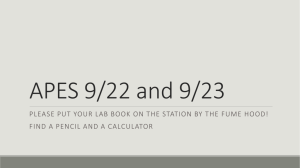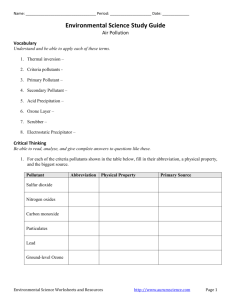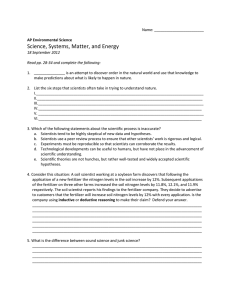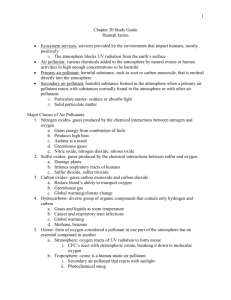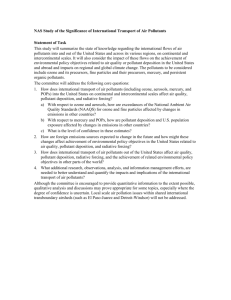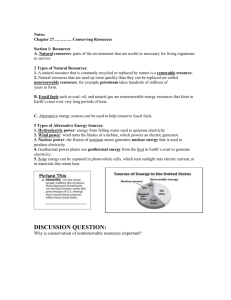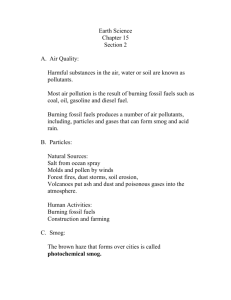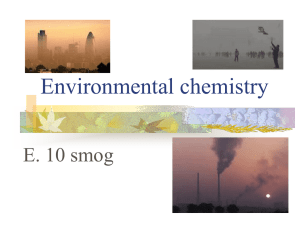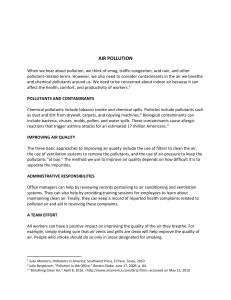APES Review Worksheet: Population, Pollution, Agriculture
advertisement
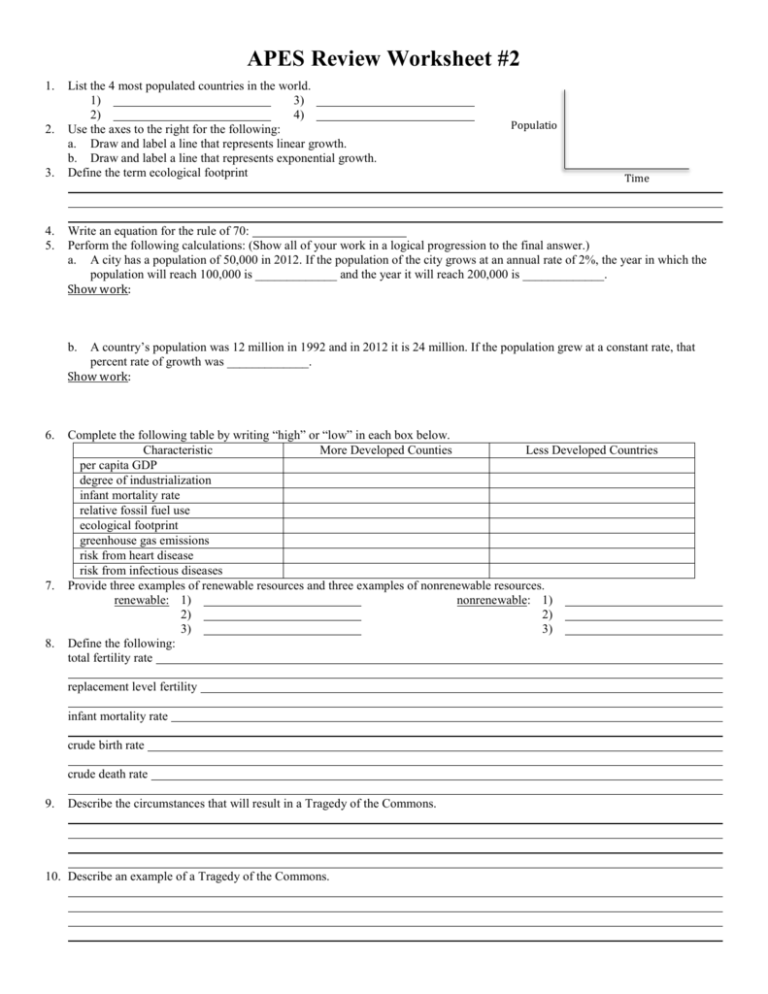
APES Review Worksheet #2 1. 2. 3. 4. 5. List the 4 most populated countries in the world. 1) 3) 2) 4) Use the axes to the right for the following: a. Draw and label a line that represents linear growth. b. Draw and label a line that represents exponential growth. Define the term ecological footprint Populatio n Time Write an equation for the rule of 70: Perform the following calculations: (Show all of your work in a logical progression to the final answer.) a. A city has a population of 50,000 in 2012. If the population of the city grows at an annual rate of 2%, the year in which the population will reach 100,000 is _____________ and the year it will reach 200,000 is _____________. Show work: A country’s population was 12 million in 1992 and in 2012 it is 24 million. If the population grew at a constant rate, that percent rate of growth was _____________. Show work: b. 6. 7. 8. Complete the following table by writing “high” or “low” in each box below. Characteristic More Developed Counties Less Developed Countries per capita GDP degree of industrialization infant mortality rate relative fossil fuel use ecological footprint greenhouse gas emissions risk from heart disease risk from infectious diseases Provide three examples of renewable resources and three examples of nonrenewable resources. renewable: 1) nonrenewable: 1) 2) 2) 3) 3) Define the following: total fertility rate replacement level fertility infant mortality rate crude birth rate crude death rate 9. Describe the circumstances that will result in a Tragedy of the Commons. 10. Describe an example of a Tragedy of the Commons. 11. Use the axes to the right for the following: a. Draw a line showing a population that exemplifies logistic growth. (s-curve) b. Draw label the carrying capacity. 12. Describe an example of a positive feedback loop. Population Time 13. Perform the following calculation. Show all of your work. In a particular year a population has the following characteristics: the crude birth rate is 45, the crude death rate is 20, the immigration rate is 1%, and the emigration rate is 0.5%. The percent rate of growth for that year is __________. Show work: 14. Use the axes below to draw and label lines representing the birth rate, death rate and total population size during the idealized demographic transition of a country. Include, written directly onto the graph, an explanation for each change in the birth rate, death rate and total population size. Rate/ Population size Time 15. On the axes below, draw and completely label four age-structure diagrams that represent slow growth, rapid growth, negative growth, and zero population growth (include labels on the x- and y-axes) 16. Provide three examples organic compounds and three examples of inorganic compounds. organic: 1) inorganic: 1) 2) 2) 3) 3) 17. Describe an example of a negative feedback loop. 18. Define photochemical smog and name one secondary pollutant that is part of photochemical smog: 19. For the secondary pollutant listed above, describe the primary pollutants that create it and the sources of these pollutants: 20. Clean coal is a term often used to describe power plants that use technology to lessen the amount of primary pollutants they generate. Define primary pollutants, give one example of one produced by a coal burning power plant, and describe a method to help remove it. 21. Describe how acid rain is generated and provide 3 effects that acid rain has on soils. 22. Define Green Revolution: 23. Cause of soil salinization: Effect of soil salinization: Method to prevent soil salinization: 24. Define Integrated Pest Management: What is an environmental benefit of it? 25. In the table below, define the changes made to agriculture during the Green Revolution and describe pros and cons of each Definition Pros Cons a. a. Pesticides b. Herbicides c. Fungicides b. c. Nitrate and Phosphate fertilizer GMOs Monoculture 26. Define cultural eutrophication: How might industrial agriculture cause this to occur? What is one method to prevent it?

